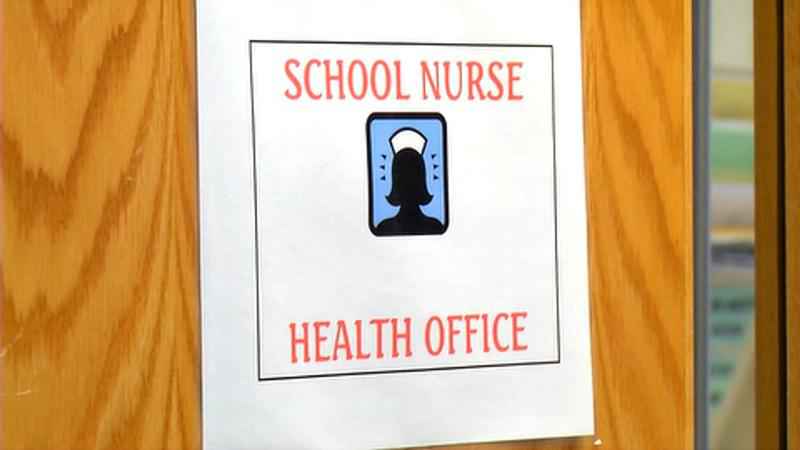Nationwide shortage of school nurses causing concerns, challenges for Minnesota districts
[anvplayer video=”5056859″ station=”998122″]
Minnesota is being impacted by a nationwide shortage of school nurses, according to the School Nurse Organization of Minnesota.
"There was a shortage before COVID, but COVID has made it even worse," said Jolie Holland, a licensed school nurse for the organization.
The most recent state data shows 637 school nurses actively working in Minnesota schools, according to the Minnesota Professional Educator Licensing and Standards Board. There are more than 2,000 public schools in the state.
Holland said that means many schools have no school nurse at all, especially those in rural Minnesota.
The state requires districts with more than 1,000 students to employ a licensed school nurse or contract for personnel who are certified public health nurses. The state licensing board didn’t have information immediately available regarding which schools, if any, are currently falling below that requirement.

[KSTP]
Holland said she’s spoken with districts across the state that don’t have professional medical staff on hand to help students.
"I said, ‘Oh, what do you do with your student that’s diabetic?’ And she goes, ‘Oh, well, the grandmother calls and tells the secretary what to do,’" Holland said, recalling one of those conversations. "I said, ‘That is frightening to me.’ Many schools don’t have a resource. They don’t have anybody they can call. They have to hope they’re getting it right. If you’re a parent, if you have any child you care about in school, if they have a health concern, you want them to go to the appropriate medical professional."
Holland also works full-time as the school nurse for Howard Lake-Waverly-Winsted Public Schools.
She said school nurses have faced increasing workloads in recent years, with a growing number of students suffering from chronic health issues, such as asthma, diabetes and seizure disorders. Those students regularly need help with medication or medical equipment.
Holland noted this school year brings even greater challenges, with students coming back to class in the midst of an ongoing pandemic.
She said COVID-19 and the uncertainties of the upcoming cold and flu season could mean more students than ever seeking aid from school nurses.
"Kids being together again, that’s going to change the ballgame. We probably will see a lot more influenza, strep throat and mono," Holland said.
She said enhanced COVID-19 protocols have also added more responsibilities for school health staff.
Her district added support staff to her office, including three full-time health assistants and several part-time registered nurses.
"I would put it as one of the top priorities," Howard Lake-Waverly-Winsted Superintendent Brad Sellner said. "With COVID-19 over the last 18 months or so, we’ve seen it just increase tenfold in terms of the responsibilities of the school nurse."
Still, Sellner said direct funding for school health offices across the state has not historically been a major focus of lawmakers.
"Definitely with the shortage now that’s going on throughout the state, I think it’s something that needs to be looked into," Sellner said.
He has had conversations with administrators at neighboring schools who are unable to fill school nursing jobs.
"They’re really struggling to find someone to fill that position and trying to come up with creative ways to maybe supplement with other people," Sellner said.
5 EYEWITNESS NEWS asked other school districts throughout the state if they’re experiencing a shortage of school nurses.
St. Paul Public Schools responded with this statement:
"Saint Paul Public Schools, like most districts, is experiencing challenges in health staffing (both Licensed School Nurses and Health Assistants) in the midst of increasing and demanding challenges. Many applicants are looking for more flexible options or work-from-home options and in general, finding enough school nurses is generally a struggle each year. We’ve had to expand our team to support contact tracing and exclusion recommendations and develop a training and support plan for these roles. We’ve also seen an increase in current employee requests for reductions in FTE or resignations as some struggle between work and homelife challenges during the pandemic. There are many burdens that have been placed on the schools (i.e. vaccine access, COVID-19 testing, contract tracing, exclusion determinations, COVID-19 guidelines and protocols) that we needed to build from scratch and everything is a high priority. Our families and employees expect a lot and we are working hard to deliver, but with more students returning to school with complex health needs, it is tough to stay on top of the competing priorities. We have had to reprioritize the workload of our health staff to make the job closer to manageable while ensuring that we are supporting the health and safety needs of our students. The constant shift in guidelines, Delta Variant and differing exclusion guidelines from district to district make it extra challenging to keep our staff and families informed. SPPS has a fabulous group of dedicated Licensed School Nurses and Health Assistants committed to supporting the health and wellness needs of our students, families and staff we work with. Flexibility is key along with patience for each other, as we continue to navigate and learn from this pandemic as we go."
Holland recently testified at the state Capitol, hoping to shed light on the need for more school nurses across the state.
She said all kids in Minnesota should have access to appropriately trained health professionals at school.
"You want to make sure they’re safe and cared for and if you don’t have that, your child could be at risk. And that’s a scary thought," Holland said.